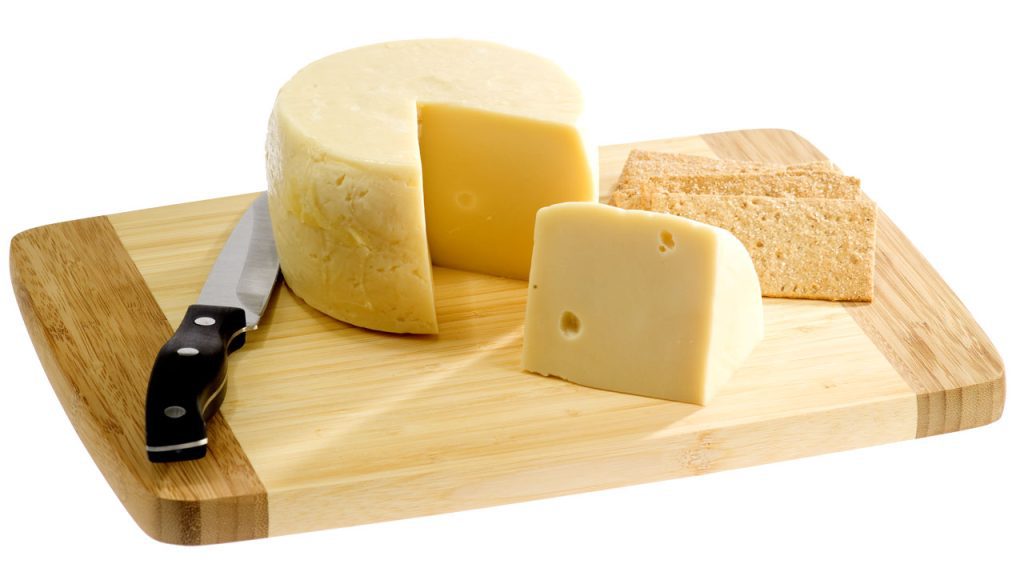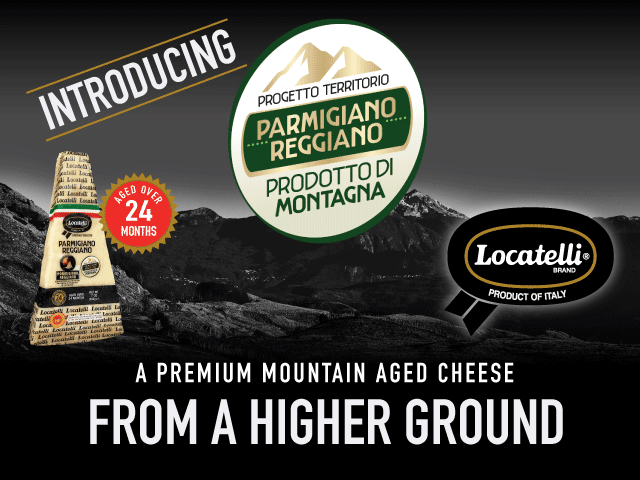Swiss Cheese: Sell Shoppers on the Whole Family
May 20, 2025 | 5 min to read
Retail sales of Swiss cheese can be enhanced through effective display and merchandising techniques. The term Emmentaler is often synonymous with Swiss cheese, and expertise in conveying the different varieties is crucial. Customers, driven by recipes, appreciate showcasing cheeses like Gruyère, Emmentaler, and others together for convenience. Techniques such as sampling and cross-merchandising with complementary foods (e.g., fondue kits) can further stimulate interest in this versatile cheese category.

Display and merchandising techniques can help grow Swiss cheese sales in retail.
Some are almost the size of a quarter, others nearly a nickel, while most are of dime-sized dimensions. It’s the “eyes,” or holes, which unite several varieties of yellow, medium-hard cheese known generally as Swiss in North America. These holes, or “eyes,” aren’t the artistic work of a cheesemaker, but instead are caused by bacteria that produce carbon dioxide during the process of making Swiss cheese.
Emmentaler is often synonymous with Swiss cheese, and indeed, the U.S. Department of Agriculture (USDA) uses the terms Swiss cheese and Emmentaler interchangeably regarding grades and standards. However, deli operators should be sure to stock and let shoppers know there’s much more.
“Our Swiss cheese customer is typically very recipe-driven and focused on cooking, so providing the various uses for these cheeses is always of high interest.”
Bryan Bland, The Kroger Co., Cincinnati, OH
“We describe Swiss cheese as a style and less associated with the Country of Origin. When the cheese is truly from Switzerland, we make it known, i.e., Swiss Emmentaler or Switzerland Swiss. Otherwise, the style of Swiss cheese can be made domestically, or even in other European countries, like Jarlsberg,” says Bryan Bland, specialty cheese category manager for Cincinnati, OH-headquartered The Kroger Co., which includes the over 1,100 Murray’s Cheese shops in the retailer’s supermarkets.
KING OF SWISS
Emmentaler, often referred to as the “original Swiss cheese or the king of cheese,” originated in the Emme Valley of Switzerland in the 13th century. Its name comes from this picturesque region, known for its rolling hills, traditional farmhouses, and strong cheesemaking tradition.
“True Emmentaler AOP is a handcrafted product made only in specific regions of Switzerland under strict guidelines,” says Daniel Schnyder, director of imports and key accounts for Stoughton, WI-headquartered Emmi Roth USA, which both makes and imports top specialty cheeses, like Swiss and is a subsidiary of the Switzerland-based Emmi Group. “For example, the cows providing the milk must live within 12 miles of the cheesemaker and eat only fresh grass and hay.
Emmentaler doesn’t separate when heated, making it ideal as a melted cheese. Popular uses include Reuben and Cubano sandwiches, rolled up with ham in chicken cordon bleu, grated over pasta and atop gratins, and as the foundation for fondue.
This Swiss cheese, also called Emmental and Emmenthal, is a mild, nutty-flavored cheese aged at least 60 days.
“It’s high in protein, low in sodium and lactose-free,” says Mike Walpole, national sales manager for Brewster Cheese, the Brewster, OH-based largest manufacturer of Swiss cheese in the U.S. “U.S.-manufactured Emmentaler may be suitable for lacto-vegetarian diets if the enzyme, i.e., rennet, doesn’t come from animals. Traditional European-made Emmentaler may use animal rennet; thus, it is not vegetarian.”
Walpole adds that aged Swiss, typically aged for three to six months, has a sharper flavor. The sharpness increases the longer the cheese ages. The company also produces a Lacey Baby Swiss, which is aged 30 days, has a creamier texture and the mildest flavor of a Swiss style of cheese with just a touch of nuttiness.
INTRODUCE THE FAMILY
Le Gruyère AOP, with small “eyes” compared to Emmentaler, is the best-selling Swiss-type cheese at Murray’s Kroger-located cheese shops, says Bland. “This cheese appears on nearly every shopping list around key entertaining holidays. In some of our more mountainous regions, we see higher demand for Gruyere and other similar cheeses throughout the ski season, with an increase in the number of European tourists.
“We focus on selling Gruyere cut fresh from the wheel in large pieces since it is so versatile in cooking and snacking. We also sell shredded Gruyere for customers seeking more convenience in their recipe-building.”
Sid’s Bahl Baby Swiss, a rich, creamy take on Swiss-style cheese with smaller “eyes” and a smooth, buttery flavor, is made by the Carr Valley Cheese Company in La Valle, WI.
“We also make Maustoner, a unique Gouda-Swiss blend that combines the nutty, caramel-like notes of Gouda with the mild, creamy texture of Swiss, creating a cheese that is both familiar and uniquely satisfying,” says Elle Fearing, national sales and marketing representative for Carr Valley.
The top-selling Swiss cheese for Heartisan Foods is its Smoked Swiss Cheese.
“Our Smoked Swiss cheese is hickory-smoked in Wisconsin. The flavor is creamy, nutty, and rich with hints of butter and walnuts,” says Sarah Jackson, director of commercial sales and marketing operations for the Barron, WI-based cheesemaker, which markets its products under the Red Apple Cheese, Cheese Brothers and Naturally Good Kosher brands.
STOCK SLICED & UNSLICED
Demand for Gruyere and Emmentaler is primarily in unsliced larger pieces at Murray’s Kroger-based cheese shop. “This is so the customer has more options at home, whether they want to slice or shred it themselves or just eat as a snack or on a composed cheeseboard,” says Bland.
Continued growing interest in charcuterie has led to double-digit growth in all bricks, bars, and rounds of cheese at Heartisan Foods, according to Jackson.
Consumer demand for pre-sliced cheese continues to grow due to convenience. However, there’s still a strong audience for deli-cut blocks, which allow for customization and freshness, says Carr Valley’s Fearing.
“Supermarkets can cater to both by offering pre-sliced options for grab-and-go shoppers, while maintaining a selection of premium, aged Swiss for slicing at the counter. Encouraging customers to try freshly sliced cheese in the deli can elevate their experience and appreciation.”
SEVERAL WAYS TO SELL MORE
Display and merchandising techniques, such as sampling, recipes, and education, can help grow Swiss cheese sales in retail.
In Murray’s Kroger-located cheese shops, says Bland, “We display cheeses more closely aligned to similar uses rather than origin. This strategy ends up grouping several Swiss and Swiss-style cheeses so the customer can choose what works best for their needs without searching too far for options. We like to create large footprints of Gruyere in the case, as this clearly communicates to our customers that they’ve arrived at the Gruyere.”
Cross-merchandising is also effective. For example, pair Emmentaler with Gruyere for fondue kits, including bread, vegetables and cornichons.
“Our Swiss cheese customer is typically very recipe-driven and focused on cooking, so providing the various uses for these cheeses is always of high interest,” says Kroger’s Bland. “The origin story and Alpine connection also play a big role in understanding the difference in Swiss cheeses versus other Swiss-style cheeses.”
14 of 17 article in DeliBusiness Summer 2025

